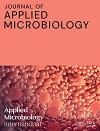Latest Publications
Structures of wild-type and a constitutively closed mutant of connexin26 shed light on channel regulation by CO2
 Deborah H. Brotherton, Sarbjit Nijjar, Christos G. Savva, Nicholas Dale, Alexander D. Cameron
Deborah H. Brotherton, Sarbjit Nijjar, Christos G. Savva, Nicholas Dale, Alexander D. Cameron
Connexins allow intercellular communication by forming gap junction channels (GJCs) between juxtaposed cells. Connexin26 (Cx26) can be regulated directly by CO2. This is proposed to be mediated through carbamylation of K125. We show that mutating K125 to glutamate, mimicking the negative charge of carbamylation, causes Cx26 GJCs to be constitutively closed. Through cryo-EM we observe that the K125E mutation pushes a conformational equilibrium towards the channel having a constricted pore entrance, similar to effects seen on raising the partial pressure of CO2. In previous structures of connexins, the cytoplasmic loop, important in regulation and where K125 is located, is disordered. Through further cryo-EM studies we trap distinct states of Cx26 and observe density for the cytoplasmic loop. The interplay between the position of this loop, the conformations of the transmembrane helices and the position of the N-terminal helix, which controls the aperture to the pore, provides a mechanism for regulation.
Unveiling novel Neocosmospora species from Thai mangroves as potent biocontrol agents against Colletotrichum species
 Klomchit, A, Calabon, MS, Worabandit, S, Weaver, JA, Karima, EM, Alberti, F, Greco, C and Mahanil, S
Klomchit, A, Calabon, MS, Worabandit, S, Weaver, JA, Karima, EM, Alberti, F, Greco, C and Mahanil, S
This study aims to investigate the taxonomy, biosynthetic potential, and application of three newly isolated Neocosmospora species from mangrove habitats in the southern part of Thailand using phylogeny, bioactivity screening, genome sequencing, and bioinformatics analysis.
Two fungal isolates of Neocosmospora and a new species of N. mangrovei were reported in this study. These fungal strains showed activity against pathogenic fungi causing anthracnose in chili. In addition, full genome sequencing and bioinformatics analysis of N. mangrovei MFLUCC 17–0253 were obtained.
N-terminal tagging of RNA Polymerase II shapes transcriptomes more than C-terminal alterations
 Adam Callan-Sidat, Emmanuel Zewdu, Massimo Cavallaro, Juntai Liu, Daniel Hebenstreit
Adam Callan-Sidat, Emmanuel Zewdu, Massimo Cavallaro, Juntai Liu, Daniel Hebenstreit
RNA polymerase II (Pol2) has a C-terminal domain (CTD) that is unstructured, consists of a large number of heptad repeats, and whose precise function remains unclear. Here, we investigate how altering the CTD’s length and fusing it with protein tags affects transcriptional output on genome-wide scale in mammalian cells, at single cell resolution. While transcription generally appears to occur in burst-like fashion, where RNA is predominantly made during short bursts of activity that are interspersed with periods of transcriptional silence, the CTD’s role in shaping these dynamics seems gene-dependent; global patterns of bursting appear mostly robust to CTD alterations
Unveiling the potential of Daldinia eschscholtzii MFLUCC 19-0629 through bioactivity and bioinformatics studies for enhanced sustainable agriculture production
 Brooks S, Weaver JA, Klomchit A, Alharthi SA, Onlamun T, Nurani R, Vong TK, Alberti F and Greco C
Brooks S, Weaver JA, Klomchit A, Alharthi SA, Onlamun T, Nurani R, Vong TK, Alberti F and Greco C
Endophytic fungi constitute a rich source of secondary metabolites that can be manipulated to produce desirable novel analogs for combating current agricultural challenges for crop production, especially controlling plant disease. The endophytic fungus Daldinia eschscholtzii MFLUCC 19-0629, was newly isolated from tropical ancient plants, Oncosperma sp., and displays a broad-spectrum of antifungal and antibacterial activities against several plant pathogens. The discovery that D. eschscholtzii MFLUCC 19-0629 has a broad spectrum of antimicrobial activity against seven major plant pathogenic microorganisms relevant to crop production and its complete genome sequence carries immense importance in the advancement of novel microbial biocontrol agents (MBCAs). This also unveils the prospect of uncovering new compounds that could be utilized for sustainable agriculture and pharmaceutical purposes.
Liver sinusoidal cells eliminate blood-borne phage K1F
 Javier Sánchez Romano, Jaione Simón-Santamaria, Peter McCourt, Bård Smedsrød, Kim Erlend Mortensen, Antonia P. Sagona, Karen Kristine Sørensen, Anett Kristin Larsen
Javier Sánchez Romano, Jaione Simón-Santamaria, Peter McCourt, Bård Smedsrød, Kim Erlend Mortensen, Antonia P. Sagona, Karen Kristine Sørensen, Anett Kristin Larsen
Blood-borne phages are believed to be captured by macrophages in the liver and spleen. Since liver sinusoids also consist of specialized scavenger liver sinusoidal endothelial cells (LSECs) and Kupffer cells (KCs), this study investigated the contribution of both cell types in the elimination of Escherichia coli phage K1Fg10b::gfp (K1Fgfp) in mice. The results presented herein contribute to increased knowledge about the pharmacokinetics of the T7-like phage K1F in the mammalian system. The cell types of the liver that are responsible for rapid phage blood clearance are identified. Our results highlight the need for more research about appropriate dose regimens when phage therapy is delivered intravenously and advise essential knowledge about cell systems that should be investigated further for detailed phage pharmacodynamics.
Screening of Hydrophilic Polymers Reveals Broad Activity in 2 Protecting Phages during Cryopreservation
 Huba L Marton, Apoorva Bhatt, Antonia P Sagona, Peter Kilbride, Matthew I Gibson
Huba L Marton, Apoorva Bhatt, Antonia P Sagona, Peter Kilbride, Matthew I Gibson
Bacteriophages have many biotechnological and therapeutic applications, but as with other biologics, cryopreservation is essential for storage and distribution. Macromolecular cryoprotectants are emerging for a range of biologics, but the chemical space for polymer-mediated phage cryopreservation has not been explored. Here we screen the cryoprotective effect of a panel of polymers against five distinct phages, showing that nearly all the tested polymers provide a benefit. This work shows that phages are amenable to protection with hydrophilic polymers and opens up new opportunities for advanced formulations for future phage therapies and to take advantage of the additional functionality brought by the polymers.
